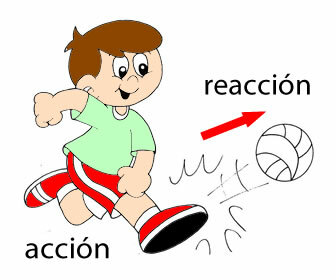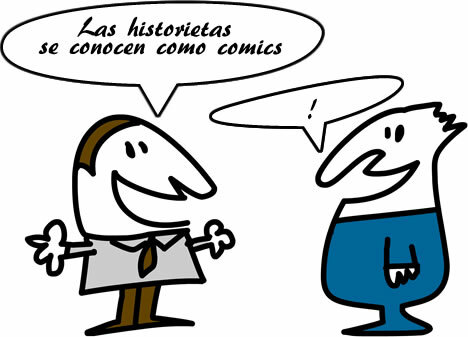Newton's Third Law Example
Physics / / July 04, 2021
The calls Newton's Laws They are the three principles established by the physicist Isaac Newton, from which most of the problems posed in mechanics can be explained. Newton's three laws are also known as laws of motion and are primarily related to the motion of bodies. Thanks to Newton's three laws, some basic concepts of physics were revolutionized.
Particularly the Newton's third law establishes that if one body applies force to another, the latter will apply a force of equal intensity to the other, but in the opposite direction. Newton's Third Law is also known as the action-reaction principle.
The original formulation of the Newton's third law He says:
Actioni contrariam semper & æqualem esse reactionem:
sive corporum duorum actiones in se mutual semper esse æquales &
in contrary parties directed.
The exact Spanish translation say what:
With every action an equal and opposite reaction always occurs:
means that the mutual actions of two bodies are always equal
and directed and in the opposite direction.

Various applications of Newton's Third Law can be found both in physics and mechanics and in people's everyday lives. Some practical examples of this are shown below.
Newton's other two Laws
As said before, Isaac Newton established three laws, what the first and second refer to is mentioned below.
Newton's First Law:
This Law establishes that a body on which no force acts (or forces that cancel each other out) will remain at rest or at constant speed. This Law was established by Newton from work previously done by Descartes and Galileo.
The original enunciation of this law (translated into Spanish) says that:
All body will remain in its state of rest
or uniform and rectilinear movement unless it is forced
by external forces to change its state.
Newton's First Law came to contradict the Aristotelian approach in which it was established that a body could only have motion if an external force was applied to it. On the other hand, Newton affirms with this Law that a body can maintain its speed even when a force is not applied to it.
Newton's Second Law:
Newton's Second Law establishes what are the necessary conditions for the state of motion or rest of a body to be modified. Newton states that these modifications occur if there is an interaction between two bodies, whether or not they come into contact. The original wording of this Law (translated into Spanish) states that:
The change in motion is proportional
to the external motive force and occurs along the line
line along which that force is printed.
Newton's Third Law
In order to present some examples in which Newton's Third Law is reflected, it is necessary to return to what it establishes. As stated before, Newton's Third Law states that for every force acting on a body, it the latter applies a force of equal intensity but in the opposite direction on the body that produced it initially. Below are some examples where Newton's Third Law is applied.
16 examples of Newton's Third Law
- Juan is upset and hits the kitchen table hard. As a result of this, Juan feels pain in his hand. The pain that Juan feels can be explained from Newton's Third Law: The moment Juan hit the table, it exerted a force on John with the same intensity as the initial force (that is, the force John applied to perform the blow).
- Ana has a similar weight to Natalia. Ana pushes Natalia and Natalia pushes Ana. As a consequence of this, both people move at the same speed but in the opposite direction.
- The moment Marco walks, he pushes the ground back with his feet. In response, the earth responds by pushing him forward, allowing Marco to advance.
- When a pistol is fired, the explosion of the powder in the bullet exerts a force on the weapon, causing the pistol to recoil slightly. Thus, the weapon is exerting a force of equal intensity but in the opposite direction on the bullet that was fired.
- Laura was running and fell. The pain and damage that he suffered from the fall was due to the fact that the ground applied a force on her of equal intensity to the one she applied at first, but in the opposite direction.
- Mariana is jumping. As she jumps, she pushes the earth down, and the earth pushes her up.
- Manuel is rowing a boat. The force that he exerts on the water when pushing it with the oar, returns to him pushing the boat forward, that is, in the opposite direction to the force of the oar.
- When a swimmer wants to implode with the edge of the pool, it exerts a force against the concrete, and in response, the edge pushes him forward with the same intensity.
- Octavio is hammering a nail into the wall. At the time of carrying out this action, you can see Newton's Third Law. As the nail is driven further and further into the wall, the hammer makes a backward motion, which occurs as a reaction to the original blow.
- A clothesline with clothes is a clear example of this Law. The clothes exert a downward force, to which the clothesline responds by applying an upward force, ensuring that the clothes do not have contact with the floor.
- Claudia and Susana are pulling the two ends of a rope. At that time, the rope remains in the same place, this is also an example of Newton's Third Law.
- The way an airplane works is also an example of Newton's Third Law. The aircraft's wheels exert a backward force, and in response, the aircraft reacts with a force of equal intensity but in the opposite direction, which is why it moves forward, that is, she advances.
- Martha is jumping on a jumper, at the moment of exerting force on the plastic surface, the latter responds by exerting on it a force of equal intensity but in the opposite direction, that is, it pushes above.
- As in the operation of an airplane, in that of the rocket the Third Law of Newton is also reflected. The rocket manages to advance due to the burnt gunpowder that comes out with great force and in the opposite direction.
- Raúl's car is stuck. The force that he applies to unblock it responds and that is why the car moves backwards.
- This Law can also be appreciated from a distance. The Earth exerts a force on the moon and vice versa.

